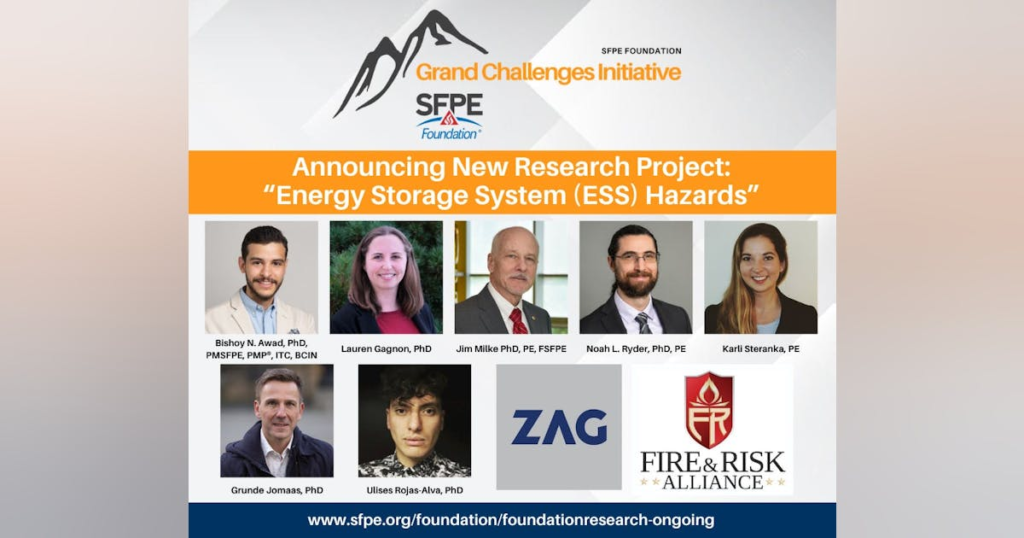“We are proud and honored to have been selected as a co-recipient of the SFPE Foundation project, which allows us to collaborate with experts from the Fire & Risk Alliance on timely topics such as BESS fire safety. We are very excited about this,” said Dr. Grunde Jomaas (FRISSBE, ZAG).
The primary objective of this study is to review existing data, research studies, and past failure events to identify fire and explosion hazards associated with BESS technology. Once the project is complete, the information will be distributed to the fire protection design, fire engineering, and fire service communities to provide more accurate guidance on fire protection design. Comprehensive information on BESS hazards is also used to compare the impact of BESS fire and explosion events with other industrial fires. The research team will work collaboratively with the SFPE Foundation and its Technical Review Board throughout the project.
To achieve the desired goal, the team performs the following tasks:
Literature review Identify fire and explosion hazards of BESS technologies Compare BESS and industrial fire and explosion hazards Identify mitigation techniques and approaches
“We are excited to be a co-recipient of the SFPE Foundation project. ESS plays an increasingly important role in meeting the world’s growing clean energy needs and ensuring community resilience. This project will provide a valuable resource to the public and society.” We will work with our partners at FRISSBE and the Foundation to ensure the success of this project so that the fire engineering community can safely develop and deploy the ESS. I’m looking forward to that. ” Dr. Noah L. Rider, PE (Fire & Risk Alliance, LLC)
The SFPE Foundation’s Grand Challenges Initiative is led by experts in four working groups: SFPE, Fire Safety Laboratories/UL Laboratories, Code Red Consultants, FM, Harrington Group, Jensen Hughes, and other companies. made possible with the financial support of Academic and research partners. This project particularly benefited from support provided by Code Red Consultants, Fisher Engineering, LMDG, Sparc Fire Protection Engineering, and UL Research Institutes’ Electrochemical Safety Laboratory.

